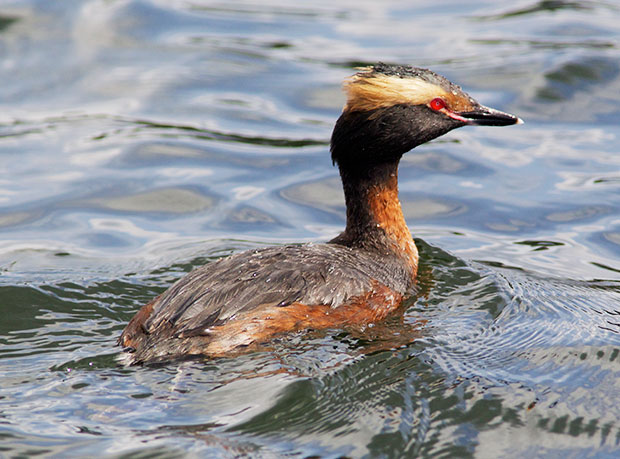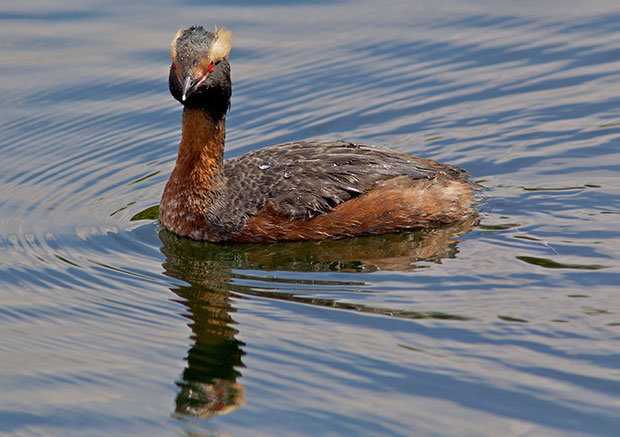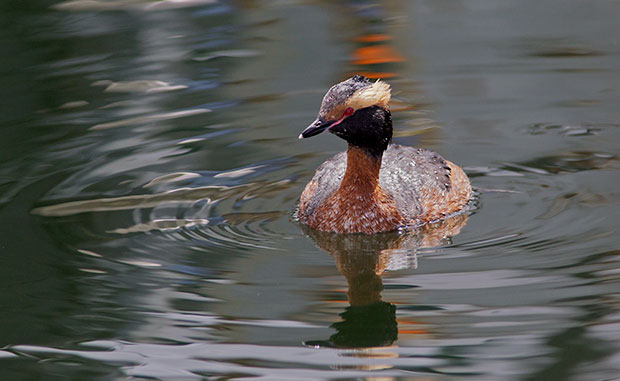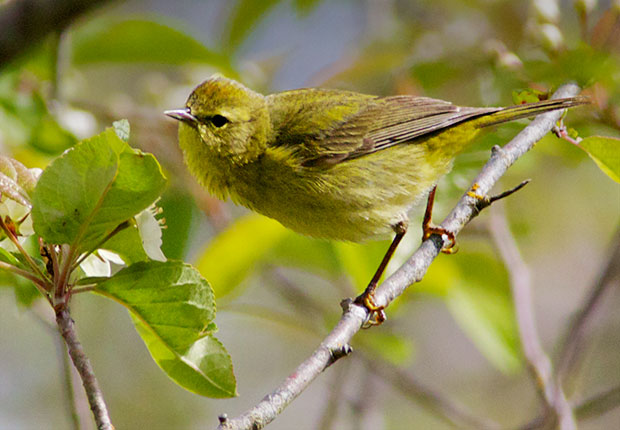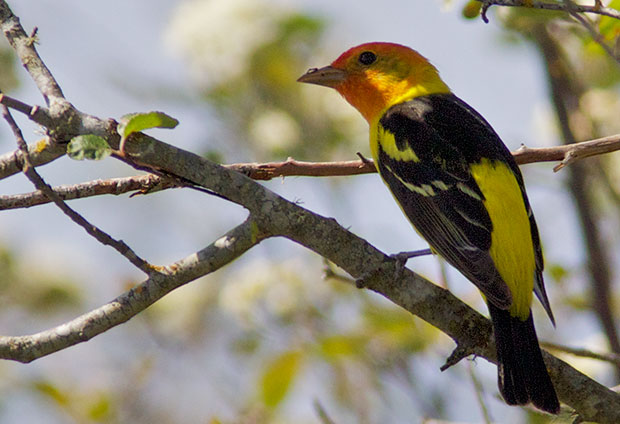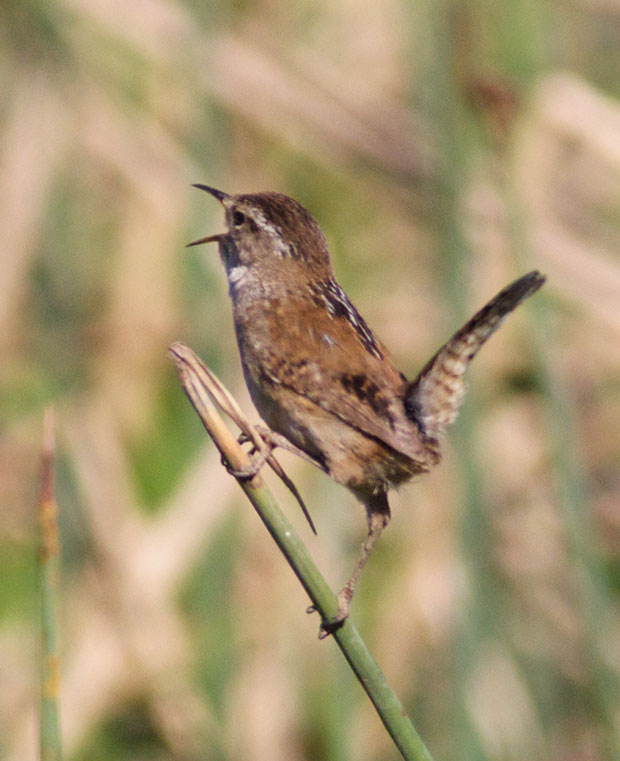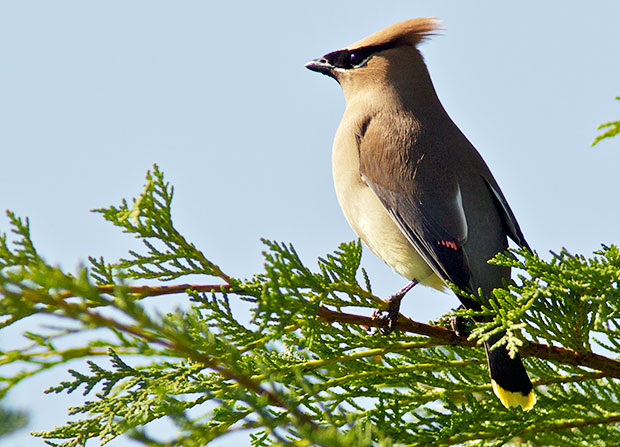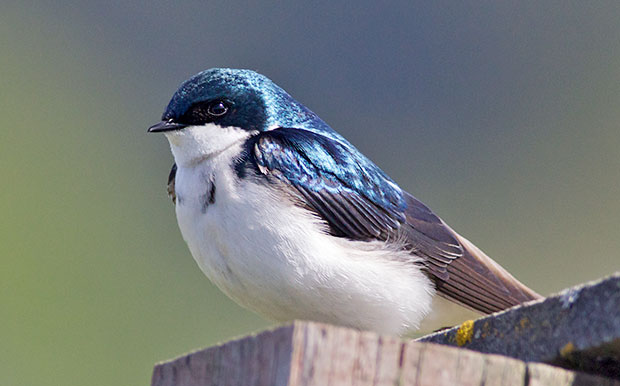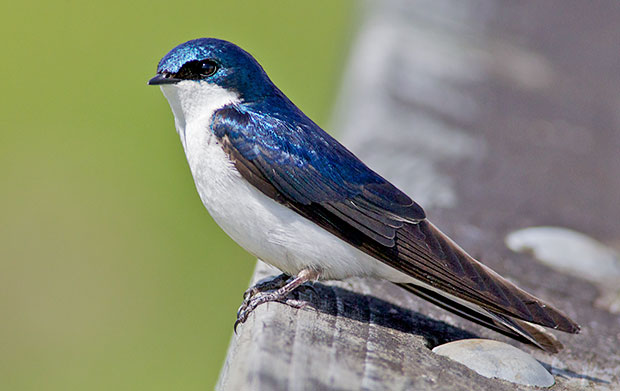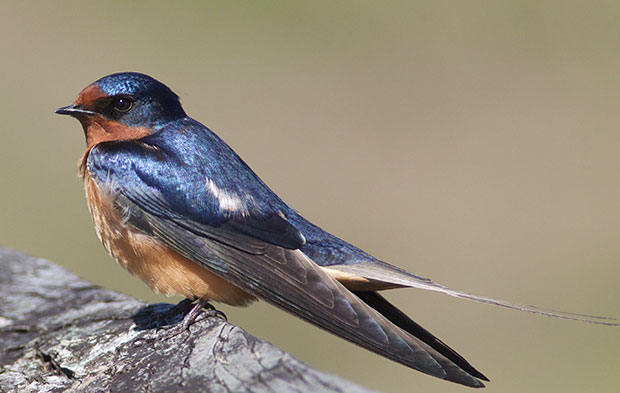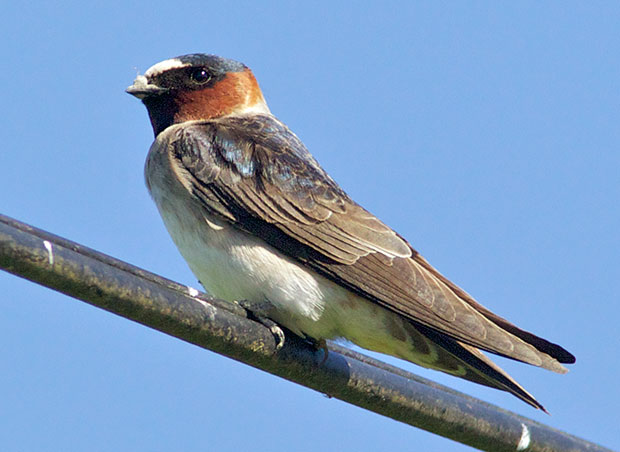Since I haven’t been complaining about the weather around here lately, you might have figured out that we’ve been having better weather. I honestly like Pacific Northwest weather or I wouldn’t have moved back here after my time in the service. But when we have winters as wet as we have had in the last two years, I begin to question just how much rain I can tolerate. Here’s a graph illustrating the kind of weather we’ve had from Jan 17 to May 10.
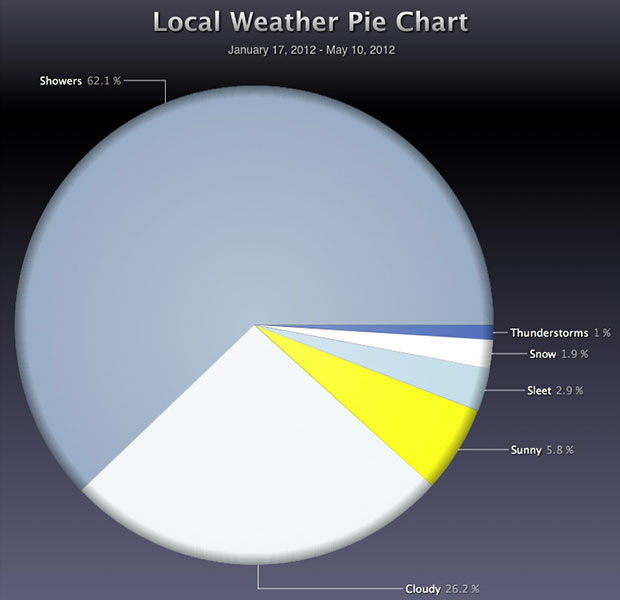
I even suspect that at least half of those sunny times must have occurred during our long winter nights.
The weather lately has been more typical Spring weather, showers with intervals of sunshine. That’s been good enough for me to get out and take photographs. I took this picture of a Violet-Green Swallow
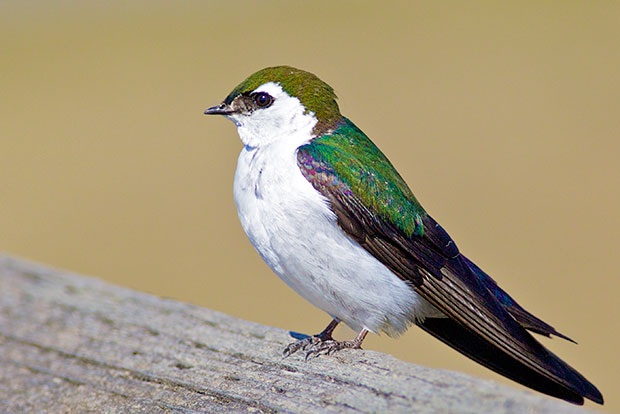
at Theler right after we got caught in some heavy showers, but the light for this shot was nearly perfect.
Sometimes when the clouds clear out overhead but I can see rain clouds to the southwest, I head out to Waughop Lake in Steilacoom because it’s close enough that I can probably get there before the weather shifts, and if it does rain I haven’t wasted much gas.
Since they made changes as Nisqually, Waughop is one of the few places where I’ve seen the striking Ring-Necked Duck
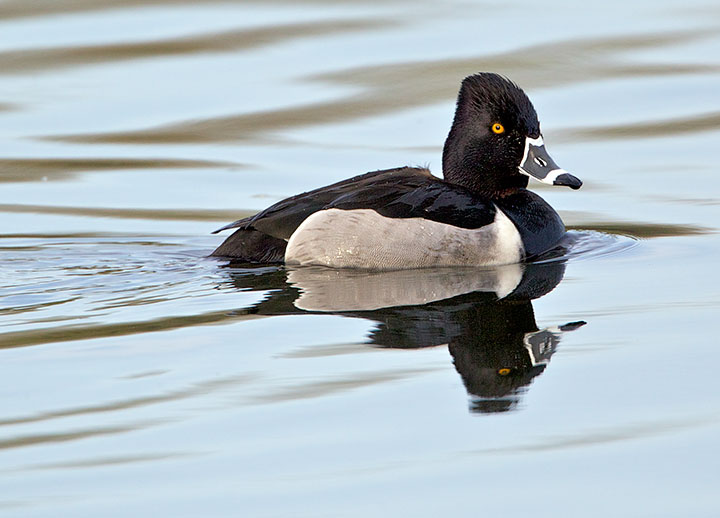
with its striking bill (I’ve always thought it should have been named the Ring-Billed Duck).
It’s also one of the few places I can count on seeing the smallest of our local grebes, the Pied-Billed Grebe.
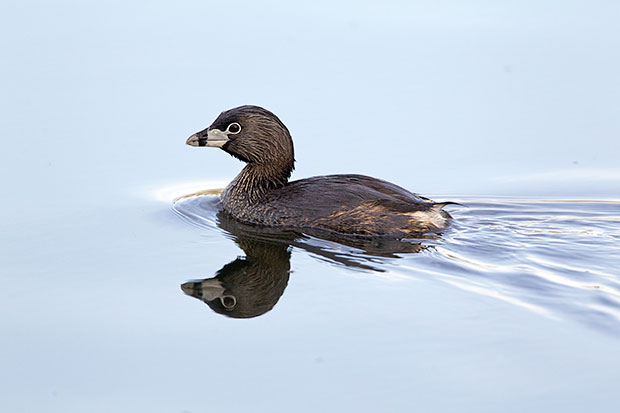
I never get bored watching these little guys slowly sink out of sight when they’re tired of you staring at them.
Most of all, though, I go to photograph the wood ducks who are much more visible at this time of year than any other time of the year. I suspect it might have something with wanting to show off their new finery to the opposite sex:
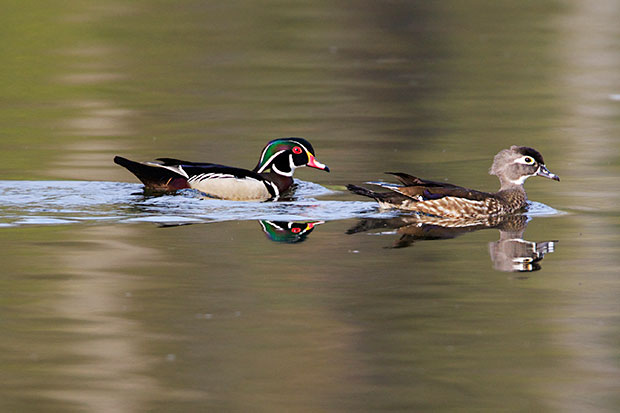
Best of all, you often find brightly colored males close to shore under the cover of branches hanging over the water,
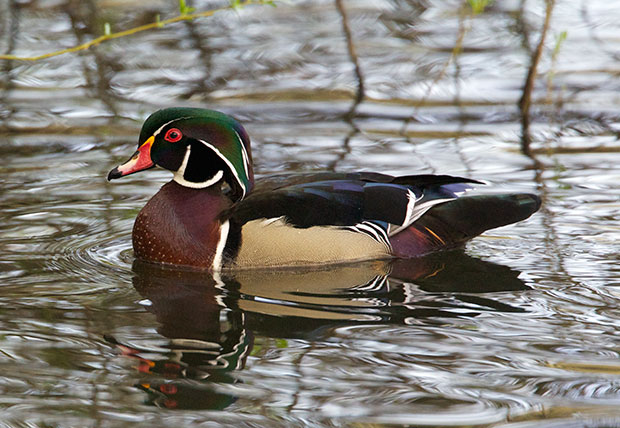
which seems like the proper setting for a Wood Duck, after all.
